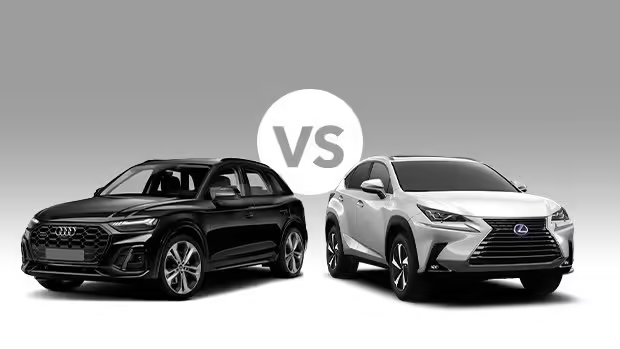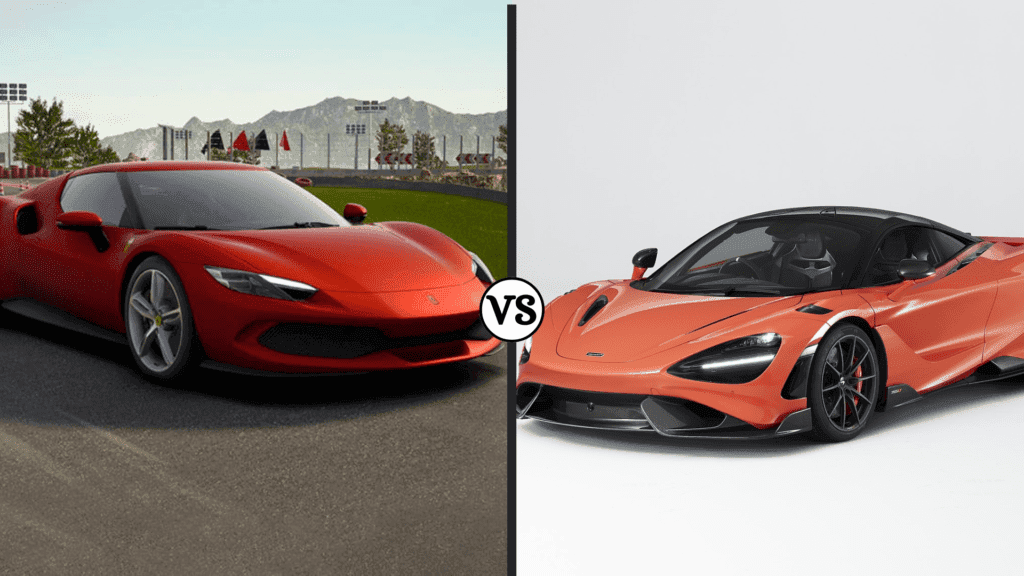The two leading contenders of this change are the Tata Sierra and the Kia Carens Clavis, which we expect in 2025. The Indian automotive landscape is rapidly evolving. With consumer expectations shifting to tech-enabled, comfortable, future-ready vehicles, automakers need to compete to deliver. The Sierra relies on heritage and rugged SUV aesthetics, while the Carens Clavis relies on practicality and family comfort with a futuristic twist.
In this comparison, we will consider design, engine specifications, interior features, practicality, safety, and value for money to decide which one is best for you.
Design Language: Iconic vs Innovative
Tata Sierra – Bold Nostalgia
Tata Motors returns the legendary Sierra to a modern world. This is not just a facelift of the previous Sierra but a complete reimagining of the model. The body looks tough with clean lines, large presence with a prominent body cladding, and a distinct profile, at last, not reverted from the black wheels and clearly distinguished from the features. The rear quarter glass give it a modern style that connects it to the previous design and is a callback to the original Sierra DNA.
From the front, the Sierra gives off a sporty SUV vibe with a high bonnet line, a contemporary SUV-wide grille, and a distinct LED DRL treatment. From the rear, there is command over its design with the large tailgate and its wraparound LED’s. Something that manages between retro style and future-proof elements, making it readily recognisable on the roads.
Kia Carens Clavis – Futuristic Elegance
Kia, for its part, goes for an entire futuristic look for the Carens Clavis. The overall look references its EV concepts, with a closed-off grill, slim LED headlamps, and connected light bars. It’s design language is more fluid and more crossover-ish than traditional MPV.

It has a sleeker silhouette with a coupe-like roofline that doesn’t sacrifice headroom. The car has big alloy wheels, defined body extras, and dual-tone paint colours that give it a premium feel. The Clavis is made for buyers who want urban sophistication and a modern design.
Engine and Performance
When it comes to what’s under the hood, both have a fair balance of power and efficiency, but they get there in different ways.
Tata Sierra
Tata offers the Sierra in 1.5L turbo petrol and 2.0L diesel engine options. Both engines are tuned for strong mid-range torque, so they should be good for highway cruisers or even off-roading once in a while. The diesel is designed to be even more rugged, with Tata’s tried-and-true engine tech to back it up.
There is a choice between automatic and manual transmissions (as for all-wheel drive…nothing has been confirmed there yet) but the Sierra has an SUV-like stance, so it at least seems to offer some sort of off-road capability, at least in higher trims.
Kia Carens Clavis
The Clavis allows for extra flexibility as it comes with three engine options: 1.5l naturally aspirated petrol, 1.5L turbo petrol, and 1.5L diesel. This selection of engines provides a range of performance suitable for city driving and long-distance travel. The naturally aspirated version will be more than suitable for everyday driving and the turbo petrol version will have a sportier feel to it.
Kia is also expected to offer manual and automatic options while building the Clavis as a front-wheel-drive MPV, and handling and road manners where comfort and convenience.
Interiors: Comfort, Space & Tech
Both vehicles are well equipped with features and prioritize passenger comfort—but they target different types of buyers.
Tata Sierra
The Sierra’s cab is all about premium feel and spaciousness. With a horizontal design, the dashboard has a clean layout. Soft-touch materials, wood accents, and ambient lighting lend it a lounge-like feeling.
One of the highlights is the triple screen setup, which consists of a digital instrument cluster, the central infotainment screen, and a separate third display for the co-passenger. There is also wireless charging, premium JBL speakers, and voice-enabled controls to make it tech savvy too.
The rear seats are like business-class airplane seats, with a recline function and lots of legroom. You can tell Tata is targeting buyers that prioritize comfort, and who enjoy a proper cabin over the practicality of a third- row.
Kia Carens Clavis
Contrarily, the Clavis was designed to accommodate families. It is offered in 6- and 7-seat configurations, and its interior allows for flexibility. Second-row seats can slide, recline, and fold-flat for easy access to the third-row with a simple one-touch tumble.
It comes with a large dual 12.3-inch display technology – one dedicated to infotainment and the second, for driver cluster use. The dashboard is futuristic, integrated with touch-sensitive control designs, a rotary gear selector, and other premium finishes.
Optional features like ventilated front seats, panoramic sunroof, ambient lighting, and premium Bose sound system make the Clavis a technologically appealing vehicle. Ideal, especially for families, who often travel together and require the variations for seating options and entertainment.
Family Friendliness and Practicality
The single most important aspect to most Indian buyers is how practical and family-friendly a vehicle is. Let’s see how these two vehicles stack up against each other.
Tata Sierra
The Sierra, in comparison, is intended for luxury and the comfort of two rows and is essentially a small family or a couple’s vehicle for road trips and weekend adventures. The boot space is generous, and the cabin is quiet and relaxed, but it lacks a third-row seat which renders it a poor choice for frequent travel with more than four passengers.
The combination of the sunroof and the rear glass panel makes the Sierra feel bright and open, while thoughtful features like rear AC vents, Type-C ports and adjustable headrest provide a comfortable ride.
Kia Carens Clavis
When it comes to family utility, the Clavis shines. It’s a real MPV, and the flexible 6/7 seater configurations are perfect for joint families or even commercial use like cab aggregators.
The storage spaces are strategically placed around the cabin. Foldable tray tables, cup holders, mobile pockets, rear sunshades, and boot flexibility make it a good option for itself for families with kids or elderly family members.
The one-touch electric tumble for the third row makes access even easier for elderly passengers; a big win for Indian families.
Infotainment and Connectivity
Buyers today expect a lot more than just a touchscreen; they expect the experience to be connected digitally overall. Luckily, both vehicles provide functionality in this area.
Tata Sierra
- 12.3-inch digital driver display
- 12.3-inch central infotainment
- 12.3-inch passenger display
- JBL sound system
- Wireless Apple CarPlay & Android Auto
- Voice commands
- Connected car tech with mobile app support
Kia Carens Clavis
- Dual 12.3-inch displays (Driver + Infotainment)
- Bose 8-speaker system
- Navigation with OTA updates
- Ambient lighting (64 colors)
- Wireless charging
- Kia Connect with remote engine start, AC control, geofencing
If you’re big on digital experience, both vehicles cover the bases you need. The Sierra’s triple-screen design feels sexier and more futuristic, however the Clavis provides practical usability with effective family focused digital offers.
Safety Features
Safety is paramount and especially for family vehicles. The attempts made by both Tata and Kia in this area are sincere.
Tata Sierra
- Up to 7 airbags
- Level-2 ADAS (adaptive cruise, lane keep assist, auto emergency braking)
- 360-degree camera
- Electronic Stability Control (ESC)
- Hill hold assist
- ISOFIX child seat anchors
Kia Carens Clavis
- Multiple airbags (up to 6 expected)
- Level-2 ADAS
- Front and rear parking sensors
- 360-degree camera
- Tyre pressure monitoring system (TPMS)
- Electronic stability program
Simply put, both vehicles will protect you and your family when it comes to an accident. While there might be some very minor compromises when it comes to some passive and active safety aids, you’re being sufficiently looked after in a serious accident.
Expected Pricing and Variants
While official pricing has yet to be released, a certain degree of market speculation and brand positioning gives us a good ballpark range.
- Tata Sierra is expected to start around ₹10.5 lakhs, with higher variants touching ₹17–18 lakhs for the diesel automatic with ADAS.
- Kia Carens Clavis may start slightly higher at around ₹11 lakhs, going up to ₹18–19 lakhs for the fully loaded 7-seater turbo petrol variant.
When we consider the features, space and technology both carshave to offer, they both represent a great value.
Verdict: Which One Should You Buy?
Buy Tata Sierra if you:
- Prefer a stylish and unique SUV that stands out
- Travel more with 4–5 people rather than a full house
- Value luxury and a premium interior feel
- Appreciate modern tech and design heritage
Buy Kia Carens Clavis if you:
- Needing a 6 or 7-seater for regular family trips
- Want a feature rich MPV, with clever storage
- Enjoy practical with tech stuffed interiors
- Prefer ease for ingress and flexible use of the third row
Conclusion
In the Indian automotive market, the Tata Sierra and the Kia Carens Clavis are representative of the way forward, with technology, convenience, and design. The Sierra is aimed at adventure with a taste of luxury, whereas the Clavis sets itself as a clear preference for the modern Indian family.
At the end of the day, it should be your lifestyle decision. In 2025, whether you are looking for a relaxed highway cruiser with nostalgia or a smart family car with tomorrow’s technology, you will have a wonderful option.
Tired of car breakdowns, late servicing, or costly repairs?
My Car Wisdom brings you smart, bite-sized car care tips, real-time reviews, and honest comparisons—so you spend less and drive more.
Because smart drivers don’t guess. They learn.
Follow us for practical car tips, ownership hacks, and expert reviews—made for Indian car owners like you.
Raja Yadav, the content writer at My Car Wisdom, brings a unique voice and style to our blog. With a knack for storytelling and a keen eye for detail, Raja ensures that every piece of content is informative, engaging, and easy to understand. His focus is on delivering high-quality articles that cater to both novice car owners and seasoned automotive enthusiasts.




